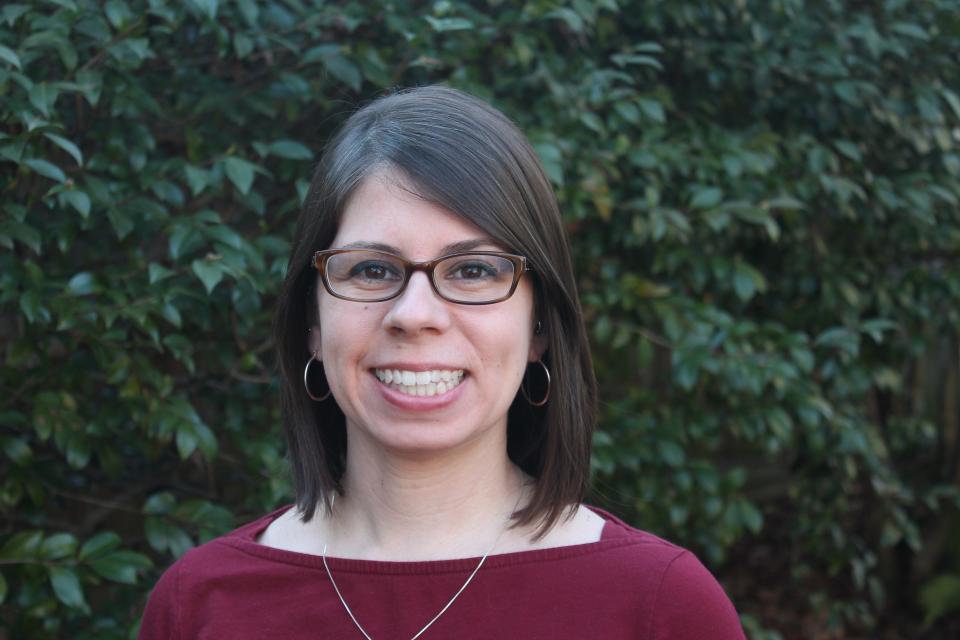Conservation Corner: How foundation is helping Spartanburg with smart 'urban forestry'
- Oops!Something went wrong.Please try again later.
The Noble Tree Foundation is a local 501(c)3 organization founded by the late Roger Milliken, with the vision of promoting and inspiring tree planting through education, technical expertise, and grant funding. Since 1999, the foundation has donated thousands of trees, invested more than $2 million in tree-planting projects for gateways, neighborhoods, and schools, and partnered with more than 20 local organizations to bring education, advice, and Milliken’s legendary passion for trees to Spartanburg.
In early 2022, the Noble Tree Foundation gifted OneSpartanburg, Inc. and the City of Spartanburg funding to plant Chinese Pistache trees along Wall Street in downtown Spartanburg. The Chinese Pistache tree, and the specific cultivar selected, Green Street, was carefully decided upon by local expert horticulturalists. While these trees might seem like an odd choice for our city, they provide unique features that make them a hearty and diverse species for this urban landscape.
Also known as “street trees,” urban trees must have specialized characteristics to thrive in city environments. Urban forests face challenges to growth and longevity not seen in natural environments, such as air pollution, storm-water runoff, rocky or compacted soils, and inhibited growing space.
More: Ways to go green for Earth Day 2023 and beyond
With beautiful fall foliage and a shady canopy, this drought-tolerant species is one of the better choices to fit the unique needs of Wall Street’s small but busy path. The root system of a Chinese Pistache is known for thriving in constricted areas and rocky soils, and the trees are resistant to most common pests. Male Chinese Pistache trees were selected to prevent any potential for invasive spreading.
Bearing in mind that the Noble Tree Foundation works to prevent invasive species, which outcompete native trees, extensive thought goes into any tree project it promotes and funds, and with local well-known horticulturalists serving as Noble Tree Foundation trustees, any tree the group plants is vetted for long life, sustainability, and ideal growth, while taking care to reduce adverse impacts to surrounding environments.
The Noble Tree Foundation’s gift included funds to cover the cost of Silva Cells for each Wall Street tree as well. Silva Cells are a newer storm-water control system that allows for free root growth and underground bioretention, which helps to manage storm-water runoff. These cells encourage root systems to expand deeper beneath the pavement, creating growing space for larger, healthier trees that thrive much longer than traditional street trees. The Silva Cells also prevent roots from causing damage to roads, sidewalks, and underground utilities—damage that could lead to future safety concerns. The Silva Cell’s design allows for untreated storm-water runoff to slowly filter through a specialized soil medium in areas with high concentrations of impervious surfaces like downtown Spartanburg.
More: Conservation Corner: Resolve to reconnect with the natural world in Upstate SC
Recent research has changed our understanding of urban forests, and what constitutes a good urban landscape. Studies have provided more nuanced understandings of biodiversity and longevity, in part as a response to climate change.
Trees that have thrived in certain areas may be less capable of adjusting to the shifting climate, and different species that are better adapted to climate challenges may help contribute to diverse and hearty urban forests. These nontraditional species can double as wildlife habitats while meeting the demands of an ever-changing human landscape.
In addition, urban environments present unique challenges for sustainable design, particularly in the debate between native vs. non-native species. Many advocates have urged cities to use only native trees in urban environments, and while some native species may do well in such scenarios, overall, in the Southeast United States, many of our common native trees require space, air quality, and soil characteristics that are simply not found in hardscaped, urbanized areas. This leads to reduced biodiversity, shorter lifespans, and costly replacement projects to protect the health of nearby trees and reduce hazards to local citizens as trees near the end of their shortened lives.
With the needs of a growing city and widespread ecological changes, arborists, foresters, biologists, urban planners, and engineers have begun thinking outside the box when planning urban forests, planting a mix of native and non-native (non-invasive) tree species. The Wall Street tree project is a wonderful example of the Noble Tree Foundation’s commitment to and investment in sustainable and progressive tree stewardship in our local community.
Jes Sdao is marketing manager for the City of Spartanburg.

This article originally appeared on Greenville News: Conservation Corner: Choosing trees for Spartanburg's 'urban forest'

